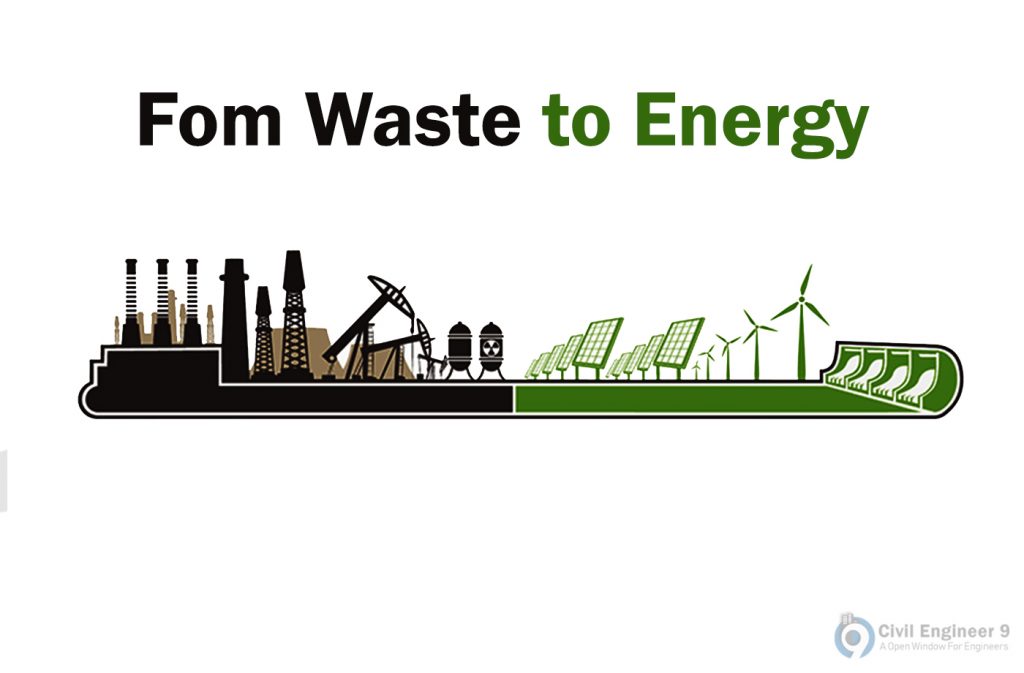The Waste to energy or Energy from Waste is a renewable energy process of generating energy in the form of electricity or heat from the waste, or a process of turning waste into a fuel source. Waste-to-energy is a form of energy recovery from wastes. Most waste to energy process generate electricity or heat from directly through combustion or produce a combustible fuel gas, like Methane, Methanol, Ethanol or Synthetic Fuels. Most noteworthy this process makes sustainable waste management and a renewable energy source.
Read more About Sustainable Energy, Sustainable home and Autonomous Buildings for better understanding.
Due to the increasing large waste amounts, shrinking landfill spaces in agglomerations and higher ecological standards in the world, Waste to energy plants demand increasing rapidity in developed and developing countries. Today, more than 2,200 Waste to energy plants are active worldwide. And these plants have a disposal capacity of around 300 million tons of waste per year.
Overview of Waste to Energy or Energy from Waste Process
The Waste to energy or Energy from Waste process involves the combustion of mixed (unprocessed or minimally processed) solid waste in an incinerator. While process designs vary, a regular system involves the transfer of waste by crane from a pit to a moving grate incinerator where the combustion process takes place. Because the combustion gases flow through a heat recovery boiler, where water is heated to produce steam, the steam can be used to power a turbine and associated generator, producing electric power that can be exported to the electric power grid network.
Municipal Solid Waste combustion systems have multiple air pollution control devices to control emissions of sulfur oxides, nitrogen oxides, particulate matter, and other pollutants. After the combustion process, the waste volume is normally reduced by 75% or more. Ash and metals are the primary residual materials. Ferrous metals can be recovered from the residual material and recycled. Bottom Ash approximately 22 % of the total volume can be land filled with other wastes, used as a landfill cover material, or construction material. Also, the fly ash (less than 3 % of the total volume) may contain heavy metals and other toxic components and can be disposed of via a separate area, in other words monofill constructed within the landfill. Wastewater or the liquids can easily be treated via a proprietary treatment system.
How much Green Waste to Energy?
How much Green waste-to-energy is actually depended on the efficiency of the plant turning the waste into energy, and the proportion of the waste that is bio-degradable. This affects depends on whether the approach is considered to be ‘recovery’ or simply ‘disposal’ of waste.
FEW EXAMPLES OF WASTE TO ENERGY PLANTS
According to the ISWA (International Solid Waste Association), there is 431 Waste to Energy plants in Europe (2005) and 89 in the United States (2004), these results are a little old but there are lots of new Waste-to-energy plants has been built or under construction. The following are some examples we found on the internet of Waste to Energy plants.
- Waste incineration WtE plants
- Essex County Resource Recovery Facility, Newark, New Jersey
- Lee County Solid Waste Resource Recovery Facility, Florida, USA
- Montgomery County Resource Recovery Facility in Dickerson, Maryland, USA
- Spittelau and Flotzersteig, Vienna, Austria
- SYSAV waste-to-energy plant in Malmo, Sweden
- Algonquin Power, Brampton, Ontario, Canada
- Stoke Incinerator, Stoke-on-Trent, UK
- Teesside EfW plant near Middleborough, North East England
- Edmonton Incinerator in Greater London, England
- Timarpur Okhla Waste-to-Energy Plant, New Delhi, India
- Burnaby Waste-to-Energy Facility, Metro Vancouver, Canada

